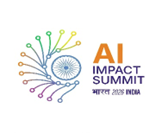Topic 1: CCRAS–Ministry of Ayush Organizes National Symposium on “Shishu Suraksha: Rashtra Suraksha”
GS Paper 2: Health
Context:To mark World Patient Safety Day 2025, the Central Council for Research in Ayurvedic Sciences (CCRAS), Ministry of Ayush, organized a two-day National Symposium on Pharmacovigilance – Shishu Suraksha: Rashtra Suraksha at LNIPES, Gwalior, in collaboration with the National Pharmacovigilance Coordination Centre for ASU&H Drugs (AIIA, New Delhi).
Key Highlights:
-
- Symposium theme: Safe Care for Every Newborn and Every Child – Strengthening Pharmacovigilance in Ayurveda.
- Inaugurated by Prof. (Dr.) B.L. Mehra, Chairman, NCISM, with dignitaries from CCRAS, AIIA, and Ayurveda colleges.
- First-time recognition: NCISM-approved CME credit scores were granted.
- Research contributions:
- 8 scientific sessions on pediatric pharmacovigilance in Ayurveda.
- 28 research papers and 31 posters presented by PG/PhD scholars, research officers, and faculty.
Significance:
-
- Reinforced the message “Shishu Suraksha: Rashtra Suraksha” (Child Safety is National Safety).
- Highlighted the importance of pharmacovigilance in pediatric care, patient rights, transparency, and safe drug practices.
- Emphasized timely reporting of Adverse Drug Reactions (ADRs) as both a professional and moral obligation.
Topic 2: India-AI Impact Summit 2026 – Logo & Key Flagship Initiatives Launched
GS Paper 2: Governance | GS Paper 3: Science & Tech
Context: The Ministry of Electronics & IT (MeitY) unveiled the official logo and key initiatives for the India-AI Impact Summit 2026, to be held on 19–20 February 2026 at Bharat Mandapam, New Delhi. This will be the first global AI summit hosted by a Global South nation, anchored on the principles of People, Planet, and Progress.


Key Highlights:
-
- Logo: Incorporates Ashoka Chakra (ethical governance & justice) with neural network flares, symbolizing AI’s transformative power across languages, sectors, and geographies.
- Guiding Framework:
- Three Sutras: People (inclusive growth), Planet (sustainability), Progress (equitable AI benefits).
- Seven Chakras: Human Capital, Inclusion, Safe & Trusted AI, Resilience, Science, Democratizing AI Resources, and AI for Social Good.
- Flagship Initiatives:
- UDAAN – Global AI Pitch Fest to showcase global startups with focus on Tier 2/3 cities, women, and differently-abled changemakers.
- YuvaAI Innovation Challenge & AI by HER to promote youth and women-led innovations.
- Global Innovation Challenge for All addressing real-world challenges.
- Research Symposium on frontier AI work and collaborations.
- AI Expo with 300+ exhibitors from 30+ countries.
Foundational AI Projects Launched (8 Indigenous Models):
-
- Avatar AI: Domain-specific avatars (healthcare, governance, agriculture).
- Bharat Gen (IIT-Bombay Consortium): Multilingual, multimodal models (2B–1T parameters).
- Fractal Analytics: India’s first large reasoning model (70B parameters).
- Tech Mahindra Maker’s Lab: Indic language models & Orion agentic AI for governance.
- Zenteiq – BrahmAI: Multimodal AI for science & industrial innovation.
- GenLoop: Small LLMs for all 22 scheduled Indian languages.
- Intellihealth: 20B parameter EEG-based healthcare model.
- Shodh AI: Material discovery AI for science & innovation.
Additional Announcements:
-
- 30 Data & AI Labs launched (part of 570-lab network), with first 27 via NIELIT, and 3 advanced labs with Intel at Mokokchung, Mhow, Mohali.
- FutureSkills courses on data annotation & curation for AI workforce readiness.
- IndiaAI Fellowship Program expanded to 13,500 scholars (UG, PG, PhD across disciplines).
Comparative Perspective: India AI vs Global AI Initiatives
| DIMENSION | INDIA AI (2025–26) | EU AI ACT (2024) | US AI SAFETY STANDARDS (2023–24) |
|---|---|---|---|
| GOVERNANCE APPROACH | Innovation + inclusivity; 3 Sutras & 7 Chakras | Risk-based regulation (prohibited, high, limited, minimal risk) | Voluntary standards (NIST AI RMF); no binding federal law |
| INCLUSIVITY | Multilingual AI (22 languages), Tier 2/3 hubs, women & differently-abled innovators | Focus on rights, privacy, anti-bias; less emphasis on multilingual inclusivity | Market-driven; inclusivity largely industry-led |
| INNOVATION & RESEARCH | 8 indigenous foundational AI models; 570 Data Labs; open-source focus | EU-funded trusted AI ecosystem; strict compliance may slow startups | Frontier innovation led by Big Tech; federal research grants |
| REGULATION VS FLEXIBILITY | Balanced: promotes innovation + ethical safeguards | Regulation-heavy; compliance-first | Light-touch; innovation-first, regulation sectoral |
| GLOBAL ROLE | Voice of the Global South; focus on equity & open models | Seeks to set global AI regulatory standards | Focus on global tech dominance & competition with China |
Significance:
-
- Positions India as a global hub of AI innovation in the Global South.
- Strengthens AI for multilingual inclusivity, healthcare, agriculture, governance, and sustainability.
- Reinforces India’s role in shaping an ethical, democratic, and equitable AI ecosystem.
Topic 3: SPREE 2025 – Expanding Social Security Coverage under ESIC
GS Paper 2: Governance
Context: The Employees’ State Insurance Corporation (ESIC), Haryana Regional Office, organized an awareness seminar at the Faridabad Progressive School Conference to promote registration under the Employees’ State Insurance (ESI) Scheme. The event emphasized compliance with the Employees’ State Insurance Act, 1948, and highlighted the benefits of the newly launched Scheme to Promote Registration of Employers and Employees (SPREE) 2025.
Key Provisions of ESI Act (1948):
-
- Mandatory registration of establishments with 10 or more employees.
- Registration must be done within 15 days of crossing the threshold.
- ESIC registration protects employers from liabilities under Workmen’s Compensation Act, 1923 and Maternity Benefit Act, 1961.
- Non-compliance leads to retrospective contribution liabilities, interest, penalties, and legal action.
Key Features:
-
- Aimed at encouraging voluntary compliance and widening ESIC coverage.
-
-
- No inspection of past records for newly registered establishments.
- No demand for past contributions, penalties, or legal action.
- Registration effective from date of application.
-
Benefits for Employees under ESIC:
-
- Comprehensive medical care.
- Sickness and maternity benefits.
- Disability and dependent pensions.
- Unemployment allowance under Atal Bimit Vyakti Kalyan Yojana.
- Funeral expenses, skill development, vocational training, and rehabilitation support.
Impact:
SPREE 2025 provides a time-bound opportunity to extend social security coverage to lakhs of employees, particularly in schools, hospitals, factories, and service establishments. It strengthens India’s labour welfare framework while easing compliance burdens on employers.
Significance:
The initiative aligns with India’s vision of universal social security coverage under labour reforms, ensuring workers’ welfare while building employer confidence through amnesty-like provisions.
Topic 4: Ecological Impact of ELSA 3 Shipwreck in Arabian Sea
GS Paper 3: Environment| GS Paper 2: Governance
Context:The Centre for Marine Living Resources and Ecology (CMLRE), Ministry of Earth Sciences, conducted a scientific assessment of the ELSA 3 shipwreck in the south-eastern Arabian Sea (June 2025). The study, based on surveys onboard FORV Sagar Sampada, covered 23 sampling locations between Kochi and Kanyakumari.
Background:
-
- The wreck was located at 09°18.76’N, 76°08.22’E, at 54 m depth.
- Cargo: 367 tonnes of furnace oil and 84 tonnes of low-sulphur diesel.
- Initial survey showed an oil slick over 2 sq. miles, with confirmed petroleum-derived pollutants.
Key Findings:
1. Chemical Pollution:
-
-
-
- Elevated PAHs (naphthalene, fluorene, anthracene, pyrene, etc.) detected.
- Trace metals (nickel, lead, copper, vanadium) present in water and sediments.
- Strong evidence of continued leakage from wreck fuel compartments.
-
-
2. Biological Impacts:
-
-
-
- Zooplankton contaminated with petroleum pollutants → bioaccumulation risk.
- Fish eggs and larvae showed high mortality, coinciding with monsoon spawning season.
- Benthic organisms: sensitive species declined, leaving pollution-tolerant worms and bivalves.
- Seabird impact: Brown Noddy (Anous stolidus) showed plumage contamination.
-
-
3. Microbial Response:
-
-
-
- Presence of hydrocarbon-degrading bacteria (Neptunomonas, Halomonas, Acinetobacter).
- Indicates natural bioremediation potential but also high hydrocarbon contamination.
-
-
4. Oceanographic Factors:
-
-
-
- Despite turbulence, oil persisted around the wreck → continued risk of leakage.
-
-
Implications:
-
- Severe ecological disruption across trophic levels – water quality, plankton, benthos, fish stocks, seabirds.
- Potential fisheries and livelihood losses due to spawning disruption.
- Health concerns for human consumption of contaminated seafood.
Recommendations:
-
- Immediate sealing of wreck’s fuel compartments.
- Long-term ecological monitoring of impacted region.
- Enhanced oil-spill preparedness and coastal disaster response framework.
- Regional cooperation under Indian Ocean Rim framework for marine pollution control.
Significance:
This study highlights the ecological vulnerability of the Arabian Sea to oil spills, underlining the need for integrated marine environmental governance, strict enforcement of IMO conventions, and rapid-response capacity to safeguard marine biodiversity and fisheries-dependent communities.
Topic 5: India’s Manufacturing Momentum – Performance and Policy
GS Paper 3: Economy | GS Paper 2: Governance
Context
-
- India’s manufacturing sector is at a turning point, emerging as a central pillar of the nation’s growth model.
- Recent IIP and PMI data, combined with flagship policies like PLI, PM MITRA, and the National Manufacturing Mission, highlight resilience, policy push, and India’s ambition to become a global manufacturing hub.
Key Performance Indicators
-
- IIP Growth (July 2025): 3.5% YoY vs 1.5% in June.
- Manufacturing Growth: 5.4% YoY in July (vs 3.7% in June).
- PMI: Rose to 59.3 in Aug 2025, highest in 17 years → strong demand, faster production, job expansion.
- Exports: Merchandise exports at US$ 184.13 billion (Apr–Aug 2025), up 2.52% YoY.
- Employment: Unemployment rate eased to 5.0% (Aug 2025), Female LFPR rose to 33.7%.
Sectoral Engines of Growth
-
- Electronics: 6x rise in production (₹1.9 lakh cr → ₹11.3 lakh cr), 127x surge in mobile exports in last decade.
- Pharmaceuticals: 3rd largest by volume; supplying 50% global vaccines. PLI & SPI schemes supporting high-value drug production.
- Automobiles: 7.1% of GDP; India 4th largest producer globally.
- Textiles: 2.3% GDP, 12% exports; PM MITRA Parks expected to create 20 lakh jobs.
Investment & Policy Push
-
- FDI: USD 81 bn (FY25); Manufacturing FDI up 18% to USD 19 bn.
- Top Sources: Singapore (30%), Mauritius (17%), USA (11%).
- Reforms: GST 2.0 (two-slab system, cost compression, MSME boost), National Logistics Policy, Industrial Corridors, Startup India, and Skill India 4.0.
- National Manufacturing Mission: Strategic, sustainable, cross-sectoral policy framework; focus on clean-tech & green energy aligned with Net Zero 2070.
India vs Global Manufacturing Trends
| PARAMETER | INDIA (2025) | GLOBAL BENCHMARKS (US/EU/CHINA) | REMARKS |
|---|---|---|---|
| IIP / INDUSTRIAL OUTPUT GROWTH | 3.5% YoY (July) | China ~4.5% (July 2025), EU ~0.9% | India showing resilience amid global slowdown |
| PMI (MANUFACTURING) | 59.3 (Aug, 16-yr high) | US ~47.9 (contracting), Eurozone ~45.8 | India’s operating conditions best in 17 yrs |
| MANUFACTURING SHARE OF GDP | ~17% | China ~27%, Germany ~19%, US ~11% | India aims 25% by 2047 |
| ELECTRONICS PRODUCTION GROWTH | 6x in a decade | China remains dominant (~30% global share) | India is emerging as alternative hub |
| PHARMA EXPORTS | 50% of global vaccines, 40% of US generics | US leads in R&D, EU in biotech | India strong in affordable generics |
| POLICY FRAMEWORK | PLI, NMM, GST 2.0, PM MITRA, NLP | US: CHIPS & IRA; EU: Net Zero Industry Act | India aligning with global industrial policy shifts |
| FDI IN MANUFACTURING | USD 19 bn (FY25) | China ~USD 70 bn (2024), US ~USD 50 bn | India fast catching up with targeted incentives |
Significance
-
- India is steadily cementing its role as a global manufacturing hub, projected to reach USD 1 trillion manufacturing economy by FY26.
- Policies focus not only on scale and exports but also on inclusive employment, MSME growth, and sustainability.
- With supply chain realignments, India has a unique opportunity to shift from “factory of the world” to a leadership hub of innovation and green manufacturing.

